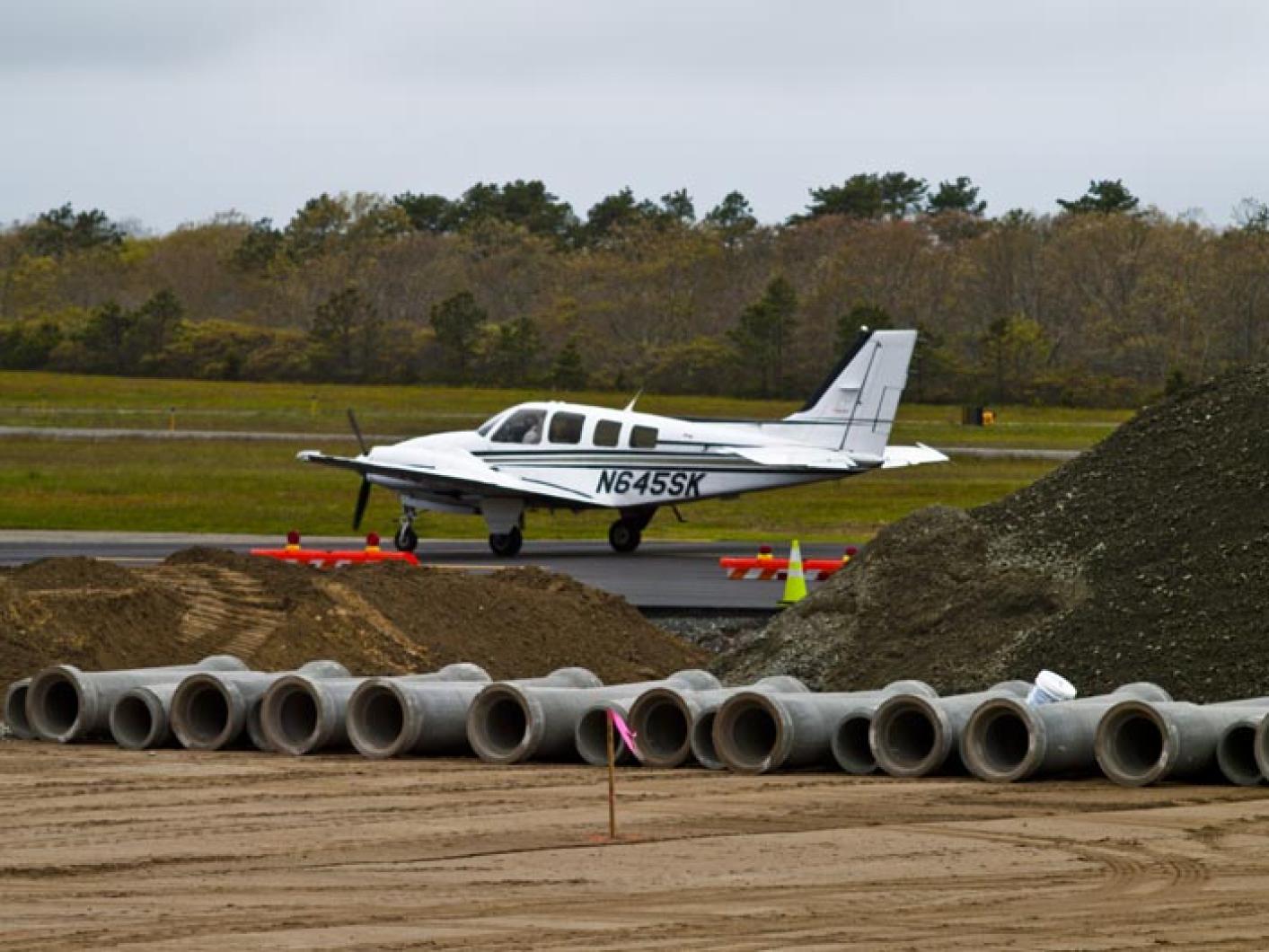The Martha’s Vineyard Airport is getting new runways. But the work you’ve seen going on out there all spring is only phase one.
“To you guys it’s probably just asphalt and drainage but to airport people it is something that will last a long time,” airport manager Sean Flynn said on a tour of the new construction this week.
The total cost of the project is $12.5 million, 95 per cent of which is funded by the federal government. The state and airport split the difference in the remaining five per cent.
The Federal Aviation Administration (FAA) expects the pavement to last for 20 years, but Mr. Flynn calls the estimate conservative.
“Our feeling is if we do it right it will last much longer than 20 years. We want to do it once and do it right, and the FAA has worked with us to do that,” he said.
Digging began two feet under the surface, followed by installing 14 inches of well-draining materials on the bottom layer, a layer of compacted stone and topped with four inches of asphalt.
“The top six inches is what the aircraft is really sitting on,” Mr. Flynn said.
The first of three phases was completed last week. The taxiway where Cape Air flights board for New Bedford, Hyannis and Nantucket was repaved and the boarding gate moved farther down. Passengers boarded on the opposite side of the taxiway over the winter, where phase two is now being done.
The second phase is set for completion by July 2. Construction will then take a six-week break for the summer and resume work on the third and final phase toward the state forest, with a completion date of Dec. 15.
“Everything is ahead of schedule, but it’s tough in springtime here on the Island because we can only pave in certain weather conditions,” Mr. Flynn said. Dry conditions and temperatures above 40 degrees are needed for laying down asphalt.
“The federal government doesn’t like to do things over time and they really don’t like to do things over budget,” he added. “In order for you to be competitive with those dollars you absolutely have to do things on time and on budget.”
Jacobs Engineering of Boston designed the project and Lawrence Lynch of Falmouth is the contractor. Mr. Flynn said 90 barge loads of materials have been used so far in the project, and the biggest challenge to date has been coordinating deliveries form the mainland and displacing airport operations to other areas of the tarmac.
“It’s just about logistics, logistics, logistics,” Mr. Flynn said. “If you have a contractor like we have that understands logistics and working on the Island, they can keep the cost of the project down with a competitive price and make sure they know how to keep it on time and on budget.”
Some parts of the project were done to accommodate new direct summer service from New York city by JetBlue and Delta airlines. When the new terminal was built in 2001, it was expected the largest aircraft to use the airport would have 50 seats; JetBlue’s planes hold 100 seats.
New equipment such as new stairways, self check in kiosks and desks were purchased to accommodate the new services, as well as a tent outside the boarding gate for a waiting area.
Mr. Flynn said it is too early to tell how the new flights will affect airport operations, but he was optimistic.
“It’s just a different way of getting here but more opportunity,” he said. “I think it’s good though, I think it’s a great thing.”







Comments
Comment policy »